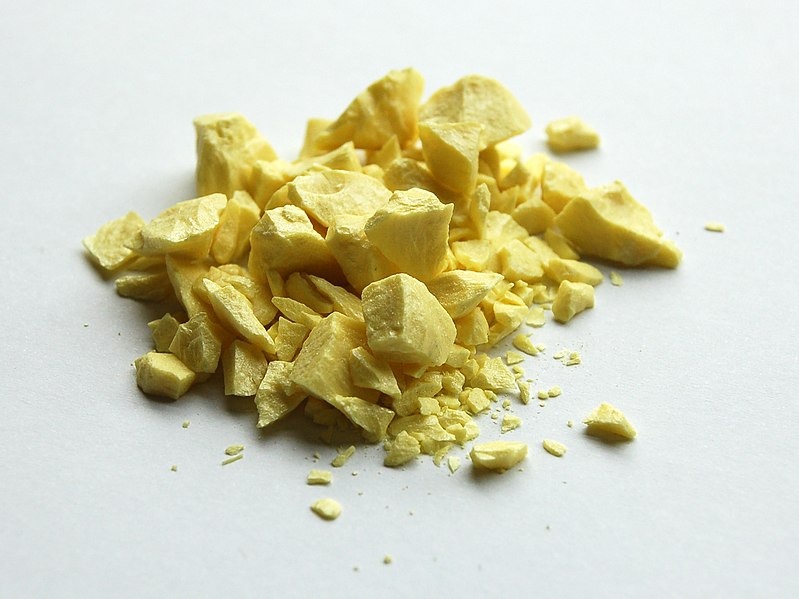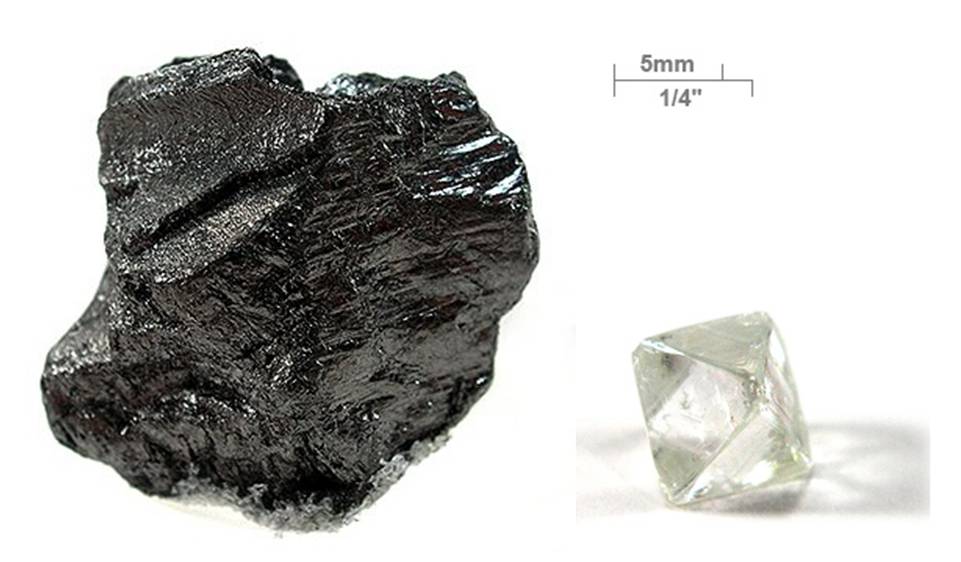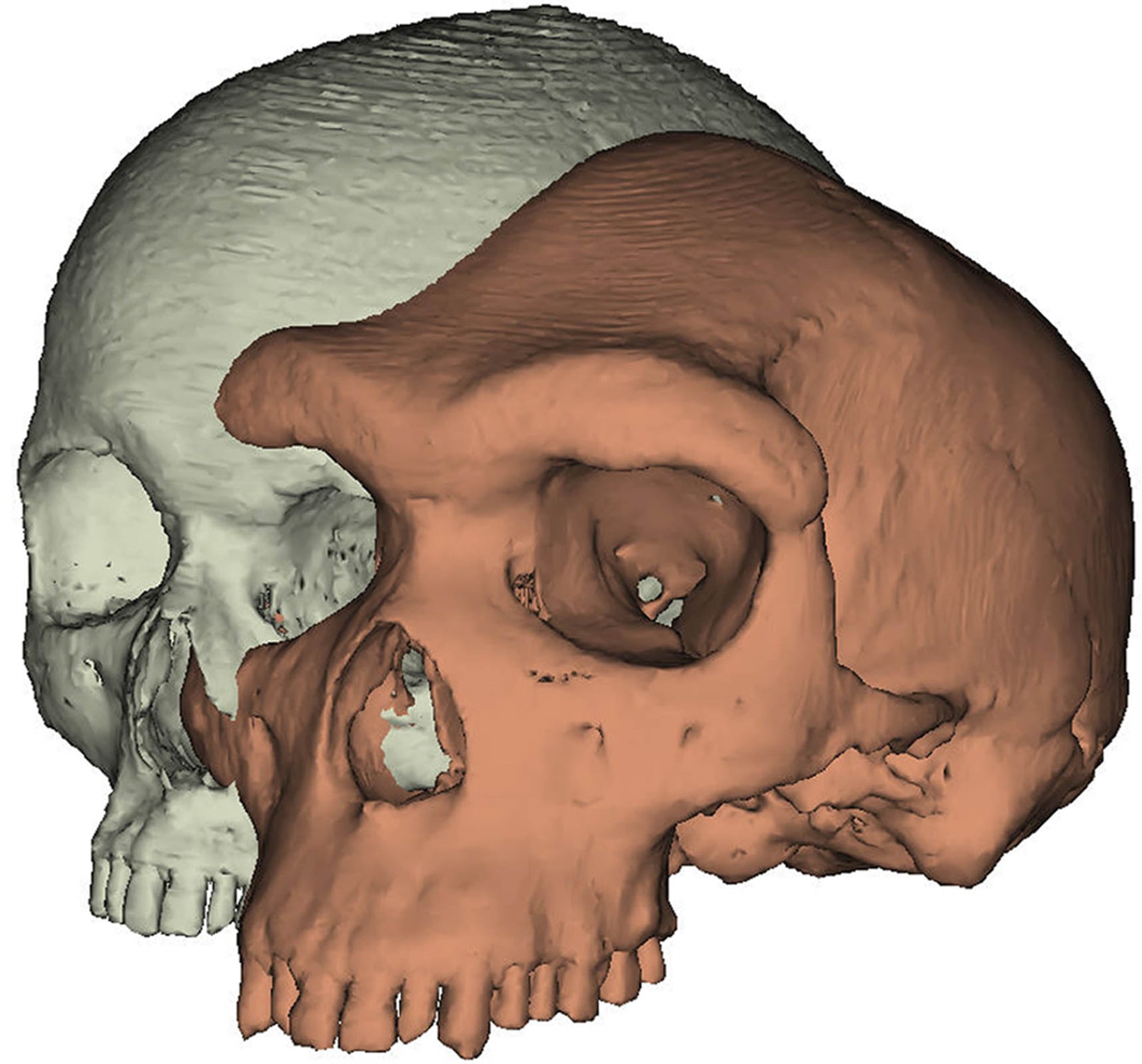Was There Any Order in the Discoveries of Elements?
It would seem more logical to put this question towards the end of the book when the reader is already acquainted with the history of the discovery of each element. All discussions should be supported by the facts and we shall do so in due time. Here we shall give only the general picture, "a bird's-eye view" of the problem so to speak.
Open pages 253-255 of the book where a chronological table of the discoveries of the elements is given. Which of them were discovered in the first place? For about ten of the elements the column "Date of Discovery" contains, instead of an exact date, the words "known in antiquity". The concept of antiquity is rather loose and the words mean only that these elements were known long before our time. Of course, we do not know who discovered them. Archaeologists, whose science is very far removed from chemistry, give more or less reliable information on the time when an element was used by man for the first time in antiquity (without, of course, being perceived as an element). Here is the list of elements known in antiquity: iron, carbon, gold, silver, mercury, tin, copper, lead, sulphur. Even a beginner in chemistry understands that these elements differ broadly in their properties. Why then do they occupy the first place in the list of the discoveries of elements? Is it because they are the most abundant elements on Earth (see the Figure on the end fly-leaf)?
As regards abundance, only iron and carbon are among the ten of the most abundant elements. Sulphur is also fairly abundant. The remaining are rare on Earth.
Topmost in the list of the most abundant elements are oxygen, silicon, and aluminium. Man breathed oxygen unaware that it is a chemical element up to the end of the 18th century. Silicon is the earth's main material but it was discovered only in the 19th century just as aluminium although clay (alumina) had been used for ages.
All this shows that abundance of chemical elements is by no means related to the date of their discovery. Hence, the statement "the more, the earlier" is erroneous. But why were these elements known from time immemorial?
In spite of the difference in their properties, these elements have something in common. Most of them occur in nature not in the form of chemical compounds but as simple substances. For instance, even at present we come across reports of finds of gold nuggets. To find them, no chemical work is required. It is enough just to look for them. Silver and sulphur occur on Earth in a free state (but mainly as constituents of minerals); copper and mercury are encountered in a free state much less frequently. This is why these elements were among the first ones to be discovered by man. A special place is held by carbon; perhaps, it was actually the very first element which announced its existence as ashes of the first camp-fire. Iron gave its name to a whole epoch in the history of mankind—the Iron Age. Many scientists believe that our forebears first began to use iron in a free state, namely the meteorite iron. And only later did the primitive metallurgists learn to smelt iron from iron ore. Tin and lead were smelted from minerals. Extraction of these metals from compounds (the modern term is "the reduction processes") is relatively simple and could be done by people who knew next to nothing about chemical procedures.
In various regions of the globe people began to use this or that element at different times. And, therefore, the most exact discovery date can usually be found from the first mention of an element's use. Obviously here the term "discovery" is arbitrary and has almost nothing in common with its meaning in later time when human knowledge attained a higher level.
The age of discovery of chemical elements began only in the second part of the 18th century. Preceding millenia had seen the discovery of only five new elements: arsenic, antimony, bismuth, phosphorus, and zinc. They were discovered by chance by alchemists who in vain were looking for the philosophers' stone. The peculiar properties of these elements were of great help in their manipulations (such as, for instance, amazing luminescence of phosphorus in the dark and unusual features of arsenic compounds).
The discovery of new chemical elements became a routine matter and not a stroke of good luck only after two main conditions had been met. First of all, chemistry had begun to take shape as an independent science, its experimental methods had become satisfactory, and scientists had learnt how to determine the composition of minerals, those treasure-troves of chemical elements. Secondly, most scientists came at last to a consensus on the conception of a chemical element. It was the beginning of a great analytical period in the development of chemistry in the course of which a large part of naturally-occurring elements were discovered.
Particularly interesting is the story of the discovery of hydrogen and elementary atmospheric gases, nitrogen and oxygen. It became possible owing to the progress in pneumatic chemistry. For a long time the study of gases was the privilege of physicists and for a long time discoverers of new gases believed that they were only varieties of air. The realization that these varieties are chemical elements was slow in coming. It was, first of all, necessary to review cardinally the old theoretical conceptions and to reject the so-called theory of phlogiston, which was believed to be the primary matter of combustion. We shall come back to the phlogiston theory later. These efforts of scientists brought due rewards: the discovery of nitrogen, hydrogen, and oxygen played a gigantic role in advancing the most important concepts of modern chemistry, its theoretical foundations and experimental methods.
Thus it does not seem paradoxical any more that oxygen (the most abundant element constituting almost one half of the earth's crust by mass) was discovered so late. Chemistry had to stand firmly on its feet to be able to identify oxygen as a new simple substance. Adequate methods of investigation were required for this purpose.
Various analytical methods, constantly perfected, were the key factors which led, step by step, to the discovery of new chemical elements. But chemical analysis by itself was not enough to fill all the boxes in the periodic table. The scientists divined the existence of many new elements not because they discovered them, figuratively speaking, on the bottom of a test tube. These elements made their existence in nature known in another way (especially those of them whose abundance is very low).
Billions of years were required for the formation of the earth's crust with its minerals and ores—a process bearing witness to many whims of nature which, to be more exact, reflect the laws of geochemistry. Some elements were less fortunate: they did not succeed in forming their own minerals, that is, those in which they would be the principal or, at least, a noticeable component. They exist only as admixtures to all sorts of minerals consisting of other elements. They seem to be widely dispersed in the earth's crust and are called "trace" elements. Only in the rarest cases do they form their own minerals and if the scientists were lucky to come across them, the new element immediately became the target of chemical analysis. As we shall see later, this was the case of germanium extracted from argyrodite, a uniquely rare mineral.
The other trace elements have quite a different history. Cesium, rubidium, indium, thallium, and gallium are classic examples of new chemical elements which were identified at first without the help of chemistry. They announced themselves with the aid of a peculiar visiting card—their spectrum. It was spectral analysis, a new research method, that contributed to their discovery. If a grain of a substance is introduced into the flame of a gas burner and the light passes through a prism, the refracted light contains a number of differently arranged spectral lines of various colours. Studying the spectra of known elements, scientists came to the conclusion that each element has its own spectral picture. Spectral analysis at once showed itself as a powerful research tool. If the spectrum of a compound contained unknown lines, it was logical to assume that this compound contained a new element. Cesium, rubidium, indium, thallium, and gallium were discovered exactly in this manner. However, in such cases it took courage for scientists to announce the existence of new elements since they had not a grain of them in their hands and did not know their properties.
Such unusual chemical elements as helium, neon, argon, krypton, and xenon were discovered by their spectra. They were termed noble or inert gases. Their content in the atmosphere is extremely low. For a long time these gases were considered to be quite incapable of chemical reactions and some even believed that the name of "a chemical element" was inapplicable to them. Inert elements were discovered without the aid of chemistry but their extraction from the atmosphere and separation from one another became possible only after the development of methods of gas liquefaction at low temperatures.
Naturally, the history of the discovery of chemical elements was to an extent affected by the abundance factor: the elements less abundant in nature were discovered later. The history of natural radioactive elements gives a fine illustration of this idea. They were discovered at the end of the 19th and beginning of the 20th century. And if it had not been for a very important event they would have remained unknown to mankind for a long time since neither chemical nor spectral methods of analysis could detect the negligible concentrations of these elements. The event was the discovery of a new physical phenomenon called radioactivity. Some substances can spontaneously and continuously emit radiation. At first it was established that this property is peculiar not to these substances in general and even not to the constituent chemical compounds but to specific chemical elements, uranium and thorium, placed at the very bottom of the periodic table. In the studies of radioactive substances it was noticed that sometimes their radiation is much stronger than that typical of uranium and thorium atoms. It was suggested that this radiation was due to unknown radioactive elements. The suggestion was confirmed by the discovery of polonium and radium. This led to another research method —the radiometric method—which, in the long run, led to the discovery of other natural radioactive elements. In this example radioactivity served as an identification mark. The radiometric method is incomparably more sensitive than other methods of detection of elements.
A tier the late twenties of our century there were no more discoveries of the elements existing in nature. But this was not the end of history of discoveries of new elements. However, the word "discovery" acquired a new meaning. It now referred to elements not existing on Earth but prepared artificially by means of nuclear reactions. It was a problem of extreme scientific and technical complexity which was tackled by scientists of many countries. All artificial or synthesized elements are radioactive, and therefore, the radiometric method has played a most important role. Here the decisive word was said by physicists. But chemists were confronted with a very difficult problem. Even in our time many synthesized elements can be obtained in the amounts of just a few atoms. When these atoms are highly radioactive their lifetime is only a fraction of a second. Therefore, chemists must show miracles of inventiveness to study their properties.
This, in a nutshell, is the centuries-long process of discovery of the chemical elements, whose symbols now appear in the Mendeleev's Periodic Table. We shall consider this process in detail. Let us now have a closer look at the principal characters of this narrative—one at a time.
But, first, a few words about the structure of the book. It consists of two parts. The first part deals with the natural elements, the second part—with the synthesized ones. It is obvious that the first part must begin with the description of the elements known in antiquity (Chapter 1); then we shall dwell on the elements discovered in the Middle Ages (Chapter 2). The term "discovery" cannot properly be applied to the elements described in these chapters. It acquired the present-day meaning only after the concept of "a chemical element" was made more precise. This was facilitated by the progress in pneumatic chemistry and by a gradual refutation of the phlogistic theory and accompanied by the discovery of oxygen, nitrogen, and hydrogen as well as the understanding of their elementary nature (Chapter 3).
A considerable number of new chemical elements was discovered in the second half of the 18th century and the first half of the 19th century with the aid of the chemical analysis (Chapter 4); the electrochemical method played a certain role in the separation of some alkali and alkaline-earth metals (Chapter 5). At the turn of the fifties of the last century the spectroscopic method was developed, with the help of which it became possible to identify several new elements on Earth (Chapter 6).
Of special interest is the discovery of rare earths, noble (or inert) gases, and, finally, the elements predicted by D. I. Mendeleev on the basis of the periodic system. Although these elements were discovered by means of chemical analysis and spectroscopic method, the histories of the above groups of elements are in many respects highly individual and separate chapters have been devoted to their presentation (Chapters 7, 8; and 9). No less peculiar is the history of the two stable elements which proved to be the last to be discovered on Earth—hafnium and rhenium (Chapter 10). The first part of the book ends with the history of radioactive elements (Chapter 11), which introduces the reader to the world of radioactivity, the world of unstable elements and isotopes the most of which were obtained artificially by means of nuclear reactions.
The second part of the book comprising two chapters (Chapters 12 and 13) is devoted to synthesized elements. In Chapter 12 the reader will be introduced to the synthesis of new elements within the previous boundaries of the periodic system—from hydrogen to uranium (technetium, prome-thium, astatine, francium). Chapter 13 covers the history of transuranium elements and prospects of nuclear synthesis.
The book ends with statistical data on the history of the elements. The concept of "discovery of a chemical element" is discussed again along with false discoveries of chemical elements (the section about false discoveries has been written by V. P. Mel'nikov).











